Encephalitis
What is encephalitis?
- Encephalitis is inflammation of the brain. Encephalitis frequently causes only mild flu-like signs &symptoms and no symptoms at all. Sometimes the flu-like symptoms are many severe.
- Encephalitis frequently causes only mild flu-like signs & symptoms such as a fever or
- headache —or no symptoms at all. Sometimes the flu-like symptoms are very severe.
- Encephalitis can also cause confused thinking, seizures, & problems with senses & motion.
- Rarely, encephalitis can be serious. Timely diagnosis & treatment is important because it’s
- it’s very difficult to predict how encephalitis will affect each & individual.
What are the Sign and Symptoms of encephalitis?
Normal vs. abnormal light spots (fontanels) of a baby’s skull
Bulging fontanel Many people with viral encephalitis have mild flu-like symptoms, such as:
- Headache
- Fever[high body temperature]
- pain in muscles or joints
- weakness or fatigue
- mild to moderate neck stiffness
many times the signs & symptoms are more severe, and may include:
- Confusion, anxiety, or hallucinations
- Seizures or epilepsy
- Loss of sensation or paralysis in certain parts of the face or body
- Muscle weakness
- Problems with speech or hearing
- Loss of consciousness
- In infants & young children, signs & symptoms might also include:
- Bulging in the soft spots of a child’s skull
- Nausea & vomiting
- Body stiffness
- Poor feeding and not waking for a feeding
- easily becoming angry
Common viral causes of encephalitis.
- Herpes simplex virus (HSV). Both HSV type 1 is associated with cold sores & fever blisters around your mouth & HSV type 2 is associated with genital herpes — which can cause encephalitis. Encephalitis caused by HSV type 1 is rare but it can result in significant brain damage and death.
- Other herpes viruses. These include the Epstein-Barr virus, which commonly causes infectious mononucleosis, & the varicella-zoster virus, which commonly causes chickenpox & shingles.
- Enteroviruses. These viruses include the poliovirus & the coxsackievirus, which usually cause an illness with flu-like symptoms, eye inflammation & abdominal pain.
- Mosquito-borne viruses. These viruses can cause the infections such as West Nile, La Crosse, St. Louis, western equine & eastern equine encephalitis. Symptoms of the infection may appear within a few days to a couple of weeks after exposure to a mosquito-borne virus.
- Tick-borne viruses. The Powassan virus is carried by black-legged ticks & causes encephalitis in the Midwestern United States. Symptoms commonly appear about a week after a bite from an infected tick.
- Rabies virus. Infection with the rabies virus, which is normally spread by a bite from an infected animal, causes a rapid progression to encephalitis once symptoms start. Rabies is an infrequent cause of encephalitis in the United States.
- Childhood infections. Common childhood infections such as measles (rubella), mumps &
- German measles (rubella) used to be a fairly common cause of secondary encephalitis. These
- causes are now uncommon in the United States due to the availability & operability of vaccinations for these diseases.
Risk factors
Anyone can develop encephalitis. an agent that can increase the danger includes
- Age: Some types of encephalitis are more common and more severe in certain age groups. In general, young children & older adults are at greater risk of most types of viral
encephalitis.
- 2. Weakened immune system: People who have HIV/AIDS, take immune-suppressing drugs, & have another condition causing a weakened immune system are at increased risk of encephalitis.
- 3. Geographical regions: Mosquitoes and tick-borne viruses are common in particular geographical areas.
- 4. Season of the year: Mosquito and & tick-borne diseases tend to be more usual in summer in
- many areas of the United States.
Complications
The complications of encephalitis are, depending on factors such as:
- Your age
- The cause of your infection
- The severity of your initial illness
- The time from disease onset to treatment
People with relatively slight illnesses usually recover within a few weeks with no long-term complications.
Complications of severe illness
- Inflammation can injure the brain, possibly resulting in coma and death. Other complications varying greatly in severity may continue for months or be permanent.
- These complications can include:
- Persistent fatigue
- Weakness and lack of muscle coordination
- Personality changes
- Memory problems
- Paralysis
- Hearing or vision defects
- Speech impairments
Diagnosis
your doctor will start with a thorough physical examination & medical history.
Your doctor might then recommend:
- Brain imaging. MRI & CT images can reveal any inflammation of the brain or another condition that might be causing your symptoms, such as a tumor.
- Spinal tap (lumbar puncture). A needle inserted into your lower back removes cerebrospinal fluid (CSF), which is the protective fluid that surrounds the brain and spinal column. Changes in this fluid can indicate infection & inflammation in the brain. Sometimes samples of CSF can be tested to identify the virus & other infectious agents.
- Other lab tests. Samples of blood, urine & excretions from the back of the throat can be tested for viruses & other infectious agents.
- Electroencephalogram (EEG). Electrodes stick to your scalp to note the brain’s electrical activity. Certain abnormal patterns may show a diagnosis of encephalitis.
- Brain biopsy. uncommonly, a small sample of brain tissue might be removed for testing. Brain biopsy is usually done only if symptoms are aggravated & treatments are having no effect.
Medical treatment of Encephalitis:
- Antiviral drugs
- Encephalitis caused by certain viruses usually requires antiviral drugs.
Antiviral drugs commonly used to treat encephalitis are:
- Acyclovir (Zovirax)
- Ganciclovir (Cytovene)
- Foscarnet (Foscavir)
- Some viruses, like – insect-borne viruses, do not respond to these treatments. But because the specific virus may not be identified immediately and at all, doctors often recommend immediate
- treatment with acyclovir. Acyclovir can be effective against HSV, which can result in significant complications when not treated immediately.
Antiviral medications are generally well-tolerated. uncommonly, side effects can include kidney damage.
Supportive care
People who are hospitalized with severe encephalitis may need:
respiratory assistance, as well as careful monitoring of breathing & heart function
IV fluids to ensure proper humidified and levels of essential minerals
Anti-inflammatory drugs, such as corticosteroids, reduce swelling and pressure within the
skull
Anticonvulsant medications, such as phenytoin (Dilantin), stop or prevent seizures.
Follow-up therapy
If you experience complications of encephalitis, you might need additional therapy, for eg-
Occupational therapy to develop everyday skills & use adaptive products that help with
everyday activities
Speech therapy to relearn muscle control & coordination to produce speech
Psychotherapy to learn coping strategies and new behavioral skills to improve mood disorders and address personality changes
Physiotherapy treatment of Encephalitis
Physiotherapy treatment is often needed for secondary complications of encephalitis such as muscle weakness, poor balance & coordination. It helps to improve strength, flexibility, balance, motor coordination, & Mobility.
Treatment exercises can include:
1) Strengthening exercises to help improve muscle function. This can be in the form of simple exercises such as sitting standing and walking. Children may find these tasks difficult to complete after having Meningitis.
2) Stretching exercises as a child may experience a stiff neck.
Balance exercises like standing with their eyes closed, standing on a wobble board, or standing on one leg. This is important as they need balance for tasks like walking, running, and cycling.
As the patient with encephalitis endures some brain damage. The problems associated with brain damage are weakness in the legs, arms, & torso. In encephalitis, the baby may not be able to crawl or may have difficulties in sitting up and standing therefore strengthening exercises are done.
Stretching exercises are done to reduce stiffness & tightness in the joints. Also, passive manual stretches are suggested to maintain muscle length & range of movement.
Stretch may be applied in a number of ways during neurological rehabilitation to achieve different effects.
The types of stretching used include;
- Fast / Quick
- Prolonged
- Maintained
When we look at the use of stretch for facilitation we apply a fast/quick stretch. The fast/quick stretch produces a relatively short-lived contraction of the agonist’s muscle & short-lived inhibition of the antagonist muscle which facilitates a muscle contraction. It achieves its effect via stimulation of the muscle spindle primary endings which results in the reflex facilitation of the muscle via the monosynaptic reflex arc.
3) Co-ordination exercises like catching balls, juggling, and kicking a football
In the case of hemiplegia, cerebral palsy, encephalitis, etc severe Spasticity will make movements impossible, these movements can be graded with voluntary motor control. While moderate Spasticity will cause some slow movements but they will be performed with too much effort and abnormal coordination and fine movements of the limbs especially involving the distal portion will be difficult & impossible.
Special exercises are recommended to the patient to help make the bones & muscles stronger. The physiotherapist uses different exercises to improve muscle strength, balance, overall flexibility, mobility, & motor coordination. The physiotherapist also educates special skills so that patient becomes independent in activities like bathing, dressing, eating, cooking, driving, etc.
Massage Therapy:
Massage therapy is a manual method used by physiotherapists that helps to restore movement & function of muscles & joints, It also improves circulation & eliminates metabolic toxins stored within muscles.
Acupressure:
Acupressure is a manual technique in which pressure is applied to the body on a specific, this relieves pain & promotes balance among the physiological systems. There are various acupressure points that correspond to various areas of the body. For example, when pressure is applied to the surface between the thumb and forefinger, the intensity of the headache is decreased.
Aquatic Therapy
Aqua therapy uses Hubbard tanks or whirlpools to allow individuals to exercise in a warm, buoyant, gravity-eliminated environment.
Transcutaneous Electrical Stimulation(TENS)
Transcutaneous electrical stimulation passes electrical currents through surface electrodes to provide pain relief & also helps in muscle re-education.
Thermotherapy:
Thermotherapy enhances blood flow, increases the extensibility of soft tissues, increases the function of the tissue cells, & helps relieve pain.
Therapeutic Ultrasound:
Therapeutic ultrasound converts electrical energy into mechanical sound waves that provide heat to deeper muscles, tendons, ligaments, & bones.
Simple range of motion exercises is done on regular basis to maintain movement & flexibility of joints & muscles. In the case of encephalitis in babies emphasis should be on practicing sitting up against gravity & crawling.
Fine motor exercise
Fine motor skills exercises are used to improve cognitive function, especially in case these skills have been diminished. Some examples of fine motor exercises are therapy putty exercises, stretching rubber bands, stacking pennies, & Jigsaw puzzles.
Cognitive exercise
Physiotherapy helps to upgrade cognitive functioning, mental health, & memory. The brain is stimulated through an activity that causes more neurons to fire, which helps to keep the brain working properly. It is especially very important to exercise the brain so that it can occupy neuroplasticity, which is the brain’s natural ability to rewire itself. E.g. repeat numbers & letters, rhythm matching, card recall, color sudoku, etc.
Physiotherapy teaches tips & methods to minimize the symptoms & maximize their ability to grow & develop.
Brushing
“Tapping is the use of a light force applied manually over the tendon and muscle belly to facilitate the voluntary contraction”.
Tapping is used to assess reflex activity with a normal response being a brisk muscle contraction. Rood’s approach recommended three to five taps over the muscle belly to be facilitated.
Brushing
Fast brushing, using a battery-operated brush on the skin overlying the muscle, is a therapeutic technique presented originally by Margeret Rood to facilitate movement responses & enhance static holding postural extensors.
There is limited research in terms of the effectiveness of brushing, its long-term use, its continued effects & the required rate & duration of brushing or pressure to be applied.
Cryotherapy
Ice can be used to facilitate a muscle response, which uses a combination of coolness & pain sensation to produce the desired response.
Passive Stretching – Fast/Quick
- Joint Compression/Traction: Joint awareness may be increased by joint compression which will lead to enhancing motor control. Receptors in joints & muscles are involved with the awareness of joint position & movement which are stimulated by joint compression. Joint compression can have both facilitatory & inhibitory effects.
Joint compression can be achieved in two ways:
- Light Compression: Normal body weight being applied through the long axis of the bone which is thought to inhibit (relax) the muscle spasticity
- Heavy Compression: Compression is greater than that applied by body weight which is thought to facilitate the co-contraction at the joint undergoing compression
Vestibular stimulation
The vestibular stimulation technique is a proprioceptive unique sensory system with a multi-sensory function. According to the type of stimulus we can use the vestibular system to achieve the many treatment alternatives.
Total body inhibition can be achieved by slow rocking, slow anterior-posterior movement, slow horizontal movement, slow vertical movement & slow linear movement.
Total body facilitation can be achieved by rolling patterns, a rocking pattern on elbows and extended elbows, & crawling.
Spinning induces tonal responses and causes strong facilitation of movement through the overflow of impulses to higher centers.
Facilitation of postural extensors is another effect of vestibular stimulation if it is used in a rapid way anterior-posterior or angular acceleration of the head & body while the child is in the prone position.
An inverted position is commonly used now to achieve total body inhibition, while it may be used to increase certain extensors.
Vestibular stimulation broadly is not used in neurological rehabilitation. The management of vestibular dysfunction is recognized as a specialist area within physiotherapy.
To improve coordination and balance in encephalitis – upper limb exercise.
Finger-to-nose test – The shoulder is abducted to 90 degrees with the elbow extended, and the patient is asked to bring the tip of the index finger to the tip of the nose.
Finger to therapist’s finger: the patient & the therapist sit opposite to each other, the therapist’s index finger is held in front of the patient, & the patient is asked to touch the tip of the index finger to the doctor’s index finger.
Finger-to-finger test – Both shoulders are abducted to bring both the elbow extended, and the patient is asked to bring both the hand toward the midline and approximate the index finger from the opposing hand
Finger-to-doctor’s finger test – the patient alternately touches the tip of the nose & the tip of the doctor’s finger with his or her index finger.
Adiadokokinesia or dysdiadokokinesia – The patient asked to do rapidly alternating movements e.g. forearm supination and pronation, hand tapping.
Rebound phenomena – The patient with his fixed elbow, flexes it against resistance. When the resistance is suddenly released the patient’s forearm moves upward and may hit his face or shoulder.
Buttoning and unbuttoning test.
Yoga for coordination
Much like stretching, yoga can help strengthen the muscles & improve coordination. Additionally, yoga has been shown to increase cardiovascular health, reduce depression & anxiety, & increase relaxation.
How to Prevent Encephalitis?
The finest way to prevent viral encephalitis is to take precautions to avoid exposure to viruses that can cause the disease. Try to:
Practice good cleanliness. Wash hands frequently & thoroughly with soap & water, particularly after using the toilet & before & after meals.
Don’t share utensils. Don’t share tableware & beverages.
Teach the children good habits. Make sure they practice good cleanliness & avoid sharing
utensils at home & school.
Get vaccinations. Keep your own & the children’s vaccinations current. Before traveling,
contact the doctor about recommended vaccinations for different destinations.
Protection against mosquitoes & ticks
To minimize exposure to mosquitoes & ticks:
Dress to protect yourself- Wear long-sleeved shirts & long pants if you’re outside between dusk & dawn when mosquitoes are most active, & when you’re in a wooded area with tall grasses & shrubs where ticks are more common.
Apply mosquito repellent– Chemicals such as DEET can be applied to both the skin & clothes. To apply repellent to the face, spray it on the hands & then wipe it on your face. If you’re using both sunscreen & repellent, apply sunscreen first.
Use insecticide- The Environmental Protection Agency recommends the use of products that contain permethrin, which repels & kills ticks and mosquitoes. These products can be sprayed on clothing, tents & other outdoor gear. Permethrin should not be used on the skin.
4)Avoid mosquitoes – abstain from unnecessary activity in places where mosquitoes are most common. If possible, ignore being outdoors from dusk till dawn, when mosquitoes are most active. Renovate broken windows and screens.
Get rid of water sources outside your home. remove standing water in your yard, where mosquitoes can lay their eggs. Common problems include flowerpots or other gardening containers, flat roofs, old tires & clogged gutters.
Look for outdoor signs of viral disease. If you notice sick or dying birds or animals, report the observations to your local health department.
Protection for young children
Insect repellents are not recommended for use on infants younger than 2 months of age. Instead, cover an infant carrier or buggy with mosquito netting.
For older infants & children, repellents with 10 to 30 percent DEET are considered safe. Products containing both DEET & sunscreen aren’t recommended for children because reapplication which may be necessary for the sunscreen component — will expose the child
to too much DEET.
Tips for applying mosquito repellent with children include:
Always assist your children with the use of mosquito repellent.
spray on clothing & exposed skin.
Apply the repellent when outdoors to decrease the risk of inhaling the repellent.
Spray repellent on the hands & then apply it to the child’s face. Take care around the eyes & ears.
Don’t apply repellent on the hands of young children who may put their hands in their mouths.
Wash treated skin with soap & water when you come to the room.
FAQ
Which mosquito causes encephalitis
Japanese encephalitis (JE) virus, a flavivirus, is closely relatable to West Nile and St. Louis encephalitis viruses. JE virus is spread to humans through the bite of infected Culex species mosquitoes, particularly Culex tritaeniorhynchus.
What does encephalitis do to the brain?
Encephalitis is inflammation of the active tissues of the brain caused by an infection or an immunological response. The inflammation causes the brain to swell, which can lead to headaches, stiff neck, sensitivity to light, mental confusion & seizures.
What are the complications of encephalitis?
Common complications
Encephalitis can harm the brain & cause long-time problems including memory problems. personality & behavioral changes. speech and language problems.
When was encephalitis discovered?
The first case of Japanese encephalitis viral disease was documented in 1871 in Japan. The annual incidence of the clinical disease varies both across & within endemic countries, ranging from <1 to >10 per 100 000 population or higher during outbursts.
What is another name for encephalitis?
Encephalitis with meningitis is called meningoencephalitis, while encephalitis with the involvement of the spinal cord is known as encephalomyelitis.

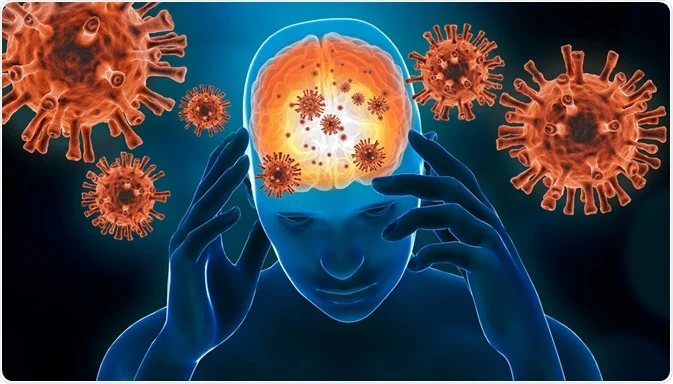
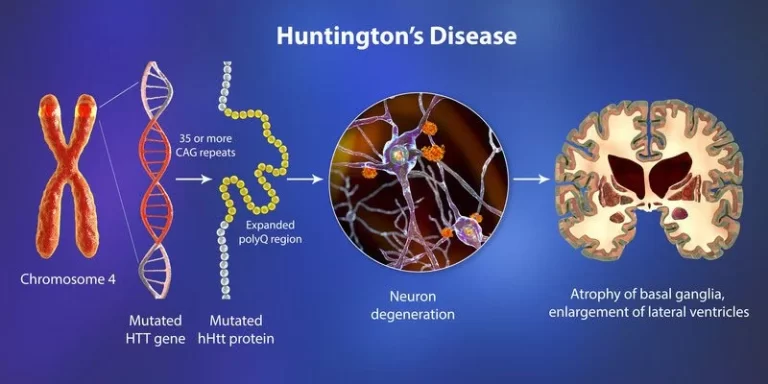
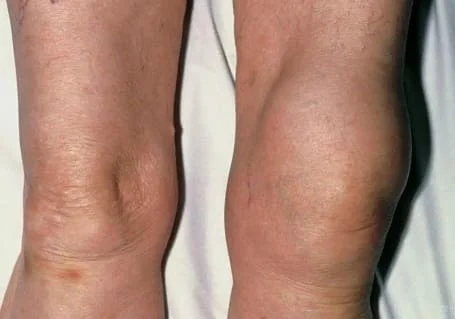

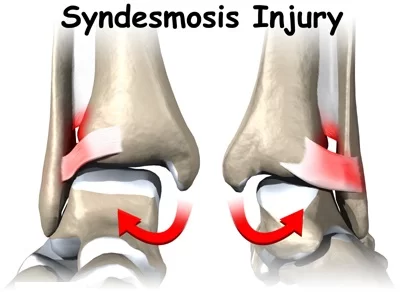
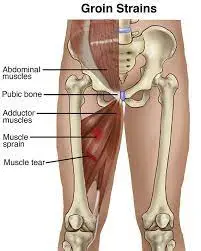
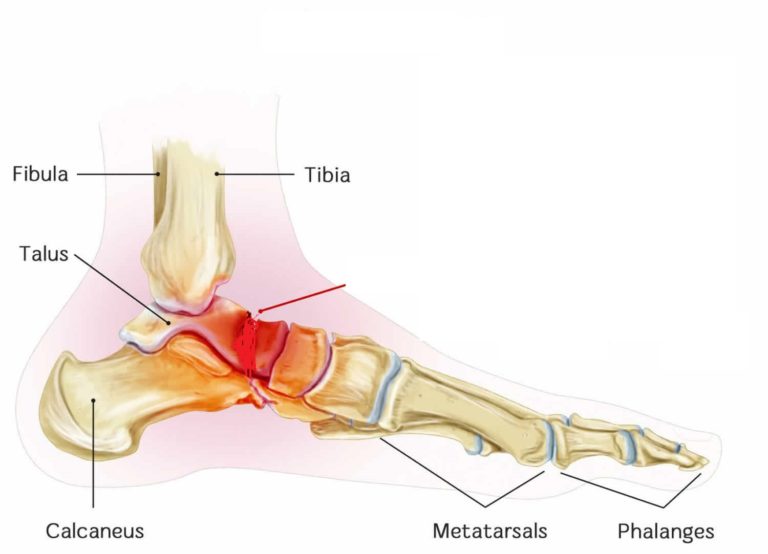
2 Comments